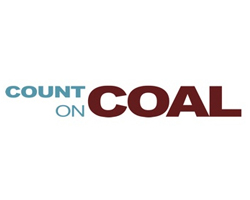Driving Up the Cost of Power for Consumers

June 5, 2019 - Making an apples to apples comparison of new weather-dependent renewables against existing coal or nuclear power plants cannot be done – at least not with our existing tools. Not only are you trying to compare one source of variable power to dispatchable, baseload generation that’s available 24-7, but you're also attempting to compare a facility that still needs to recover its construction costs against a facility that has already paid for most, if not all, of its. In rational economics, the paid-off plant should be more valuable and generate power at a lower cost than a new facility carrying heavy debt. Yet, well-operating baseload plants are closing in rising numbers, replaced by newer, more expensive and often less reliable alternatives. Is this a good deal for consumers? A new study definitively says no.
Existing Plants are the Most Cost-Effective Option
The Institute for Energy Research (IER) and the American Coalition for Clean Coal Electricity (ACCCE) have dug into the numbers and attempted to square the cost of power between existing and new plants. Their analysis found that building new electrical generating facilities to replace well-operating existing plants ahead of their optimal retirement time increases electricity prices to consumers.
To come to this conclusion, they compared the levelized cost of electricity (LCOE) – defined by the Energy Information Administration (EIA) as the cost of building and operating a generating plant over an assumed life and duty cycle – for six power sources: wind, solar, hydro, nuclear, natural gas and coal. While EIA calculates LCOE for new power sources, it doesn’t attempt to analyze the LCOE for existing power plants. This new analysis attempts to fill that critical gap.
IER and ACCCE found that, on average, the LCOE for new sources is significantly greater than the LCOE for existing sources. Compared to the existing coal fleet, the LCOE is 22 percent greater for new natural gas combined cycle plants, 115 percent greater for new solar and 120 percent greater for new wind. In other words, pushing out existing, well-operating coal capacity is driving up costs – costs on the verge of exploding as more intermittent wind and solar capacity is forced onto the grid.
.png)
Importantly, IER and ACCCE’s analysis attempts to rationalize the LCOE for variable, renewable sources of power by adding an “imposed cost” to their bottom line. This cost is a calculation of the costs imposed on the system to balance the rise and dips in generation from wind and solar facilities. While adding in this imposed cost helps provide a more accurate and direct comparison with dispatchable sources of energy, it too is an incomplete accounting of the full system costs needed to integrate wind, solar or new natural gas generation. As the authors of the study point out, they did not attempt to package up the cost of adding new transmission infrastructure to move wind and solar power, or natural gas, to where it’s needed. These are significant costs – costs that might be camouflaged on power bills but are nevertheless paid by consumers.
As a bottom line, the study finds that "the most cost-effective generating option is not to replace existing resources.”
Despite what’s best for American competitiveness and consumers, the requests to replace coal plants will continue to come, driven by utilities that are increasingly doing what’s good for their investors and not what’s best for consumers. Instead of valuing their existing power plants that consumers have paid for, regulated utilities are turning hostile to their existing assets and chasing new. The problem is a perverse incentive at the very heart of the regulated utility business model.
.png)
A Perverse Incentive
Utilities make a profit by investing in new hardware, be that power plants, transmission infrastructure or even smart meters. Those investments are returned to the utility with a profit through the rates paid by ratepayers. This model creates a perverse incentive for utilities to devalue their existing plants and to push, whenever feasible, to build new. New plants, after all, mean new profit.
This is just the opposite of how most businesses operate. Most businesses take a hit on new assets only to see that investment returned as time goes on. Consider a business that invests in a new truck to increase productivity. That truck becomes more valuable once it has been paid off, not less. The regulated utility model is upside down. Utilities become hostile to their older assets in the chase for profit from new investments — the more expensive the investment, the more return in profits.
Consequently, where a consumer might view a renewable energy mandate as a boondoggle, sure to increase costs, utilities see an opportunity for a higher return to investors.
Public Service Commissions are supposed to be a check against utility overspending. These commissions are tasked with weighing the value of utility proposals to spend and pass that expense along to consumers. Often, commissioners do step in and stop utility proposals that don’t pass muster. But when faced with legislative mandates for renewables, they might protest high costs and even point to more cost-effective alternatives, but ultimately approve the projects regardless.
Utilities may be increasingly marketing themselves as leaning into a green energy future and as purveyors of public good, but they are hardly disinterested parties. They aren't just going along with renewables mandates; they're now exploiting them. And you – the ratepayer – are picking up the tab.

